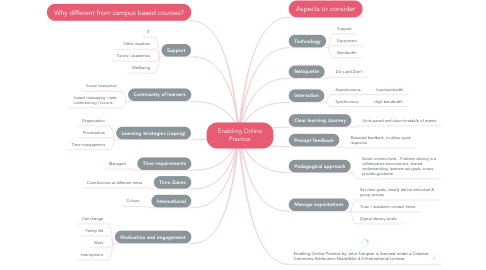Enabling Online Practice
par John Sumpter


1. Technology
1.1. Support
1.2. Equipment
1.3. Bandwidth
2. Netiquette
2.1. Do's and Don't
3. Interaction
3.1. Asynchronous
3.1.1. Low bandwidth
3.2. Synchronous
3.2.1. High bandwidth
